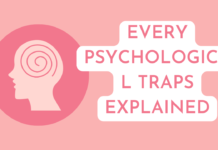Structured problem solving is a systematic approach to identifying, analyzing, and resolving problems. It is a step-by-step process that helps individuals or teams to break down complex problems into smaller, more manageable components and then develop effective solutions. Below are the common steps in a structured problem-solving process:
- Define the problem: Defining the problem is the first step in the structured problem-solving process. It involves clearly identifying and describing the issue or challenge that needs to be addressed. The problem should be stated in a concise and specific manner, so that everyone involved understands what the problem is and what is at stake.
- Gather information: Once the problem has been defined, the next step in the structured problem-solving process is to gather information. Gathering information involves collecting and analyzing data and other relevant information about the problem. The goal is to gain a better understanding of the problem and its causes, as well as to identify potential solutions.
- Identify the root cause: Identifying the root cause is a critical step in the structured problem-solving process. It involves analyzing the information gathered in the previous step to determine the underlying cause of the problem. The root cause is the fundamental reason why the problem occurred, and identifying it is crucial for developing effective solutions.
- Generate potential solutions: After identifying the root cause of the problem, the next step in the structured problem-solving process is to generate potential solutions. This involves brainstorming and generating a list of possible solutions to address the problem.
- Evaluate potential solutions: Once potential solutions have been generated, the next step in the structured problem-solving process is to evaluate them. Evaluating potential solutions involves analyzing and comparing them based on certain criteria to determine their feasibility, effectiveness, and cost.
- Select the best solution: After evaluating potential solutions, the next step in the structured problem-solving process is to select the best solution. This involves choosing the solution or combination of solutions that is most likely to effectively solve the problem or address the root cause.
- Implement the solution: After selecting the best solution, the next step in the structured problem-solving process is to implement the solution. Implementation involves putting the plan into action and executing the steps necessary to solve the problem.
- Monitor and evaluate: The final step in the structured problem-solving process is to monitor and evaluate the implemented solution. This step involves assessing the effectiveness of the solution and making necessary adjustments to ensure continued success.
By following a structured problem-solving process, individuals and teams can effectively tackle complex problems and improve their problem-solving skills.










